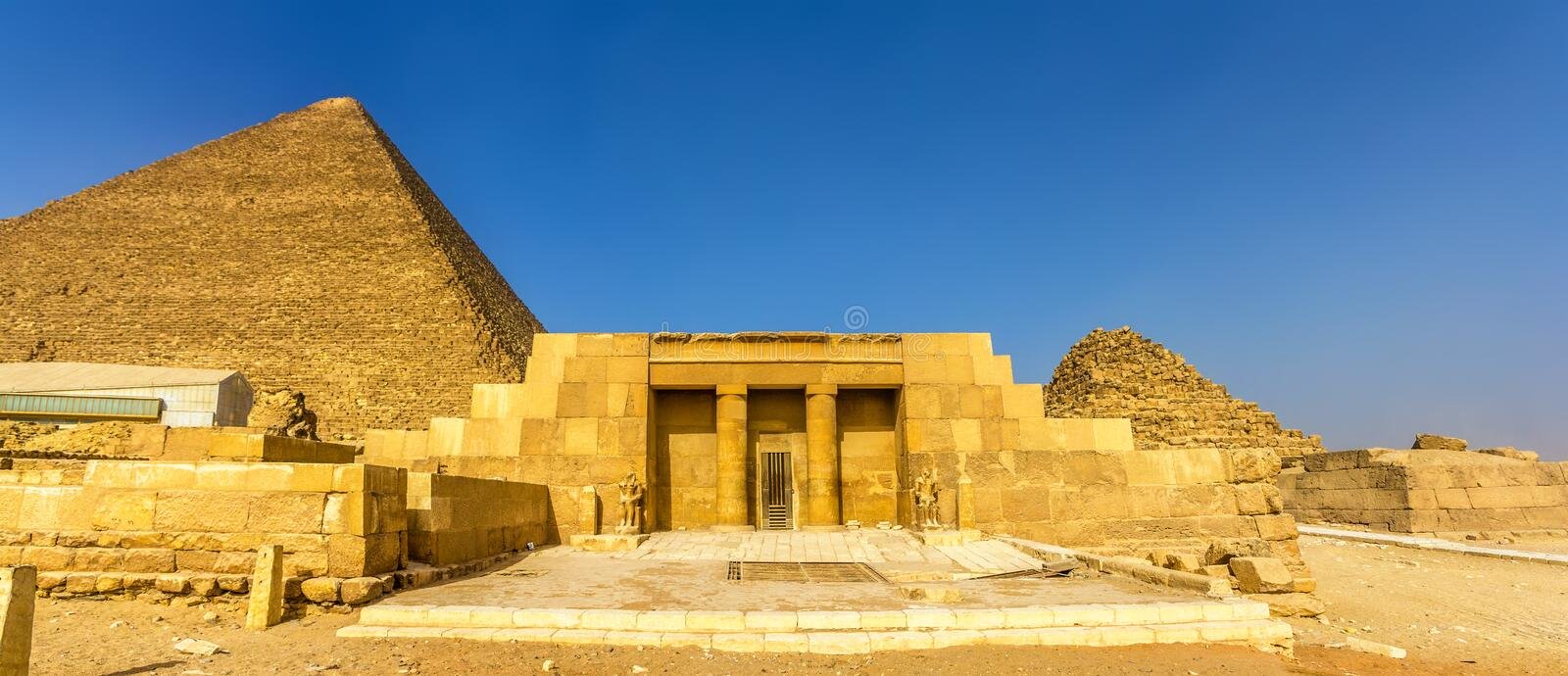Mastabe is a typical ancient Egyptian tomb in the form of a flat-roofed, rectangular structure with inward sloping sides, constructed out of mudbricks. Until 1800s, mastabas were believed to be granaries. They served as tombs for the kings and dignitaries from early times through to the end of the Old Kingdom. The term mastaba comes from Arabic word ‘ AL MAS’TIFA’, which means bench. In the ancient Egyptian language it is said to be a “bench cut” in the rock, which served as a tomb for important people during early periods of Egyptian civilization.
Mastabas were different from grave pyramids of the early periods, which were rectangular structures with inward sloping sides and a courtyard on top. These mastabas can be found in many necropolises along the River Nile.
When entering mastaba one would see an open courtyard on ground level, probably surrounded by walls. In the middle of the courtyard there is a small hole in the ground, which was a step leading to a lower level. This area is considered to be a serdab . The serdab used to contain statues of deceased and symbolize their presence due to religious rituals.
The wall on right side of mastaba’s entrance contains false doors and storage chambers used for the king’s goods. The wall on left side of entrance has a niche in it, probably for statue or offering table.
Pyramid are tombs that have chambers above ground with flat roofs made of stone slabs. They are located near the Nile valley and are surrounded by desert sand which cover them partially during certain periods. Pyramid were reserved for kings only, which shows the great difference in social status between king and common people. Royal tombs are usually found inside or near pyramid, while mastaba tombs are located around pyramid.
Read More : https://timehubblog.com/2022/01/16/how-to-vote-in-india-elections-2022/
During the 1st dynasty, there were no pyramids built yet. Instead mastabas were used as royal tombs during this period. It was only at the end of 1st dynasty when the famous step pyramid was built in Saqqara, which is probably the most well-known pyramid belonging to King Djoser.
The tomb of King Djoser’s vizier Imhotep – This mastaba is considered to be an important megalithic monument due its stone architectural details and proportions of height to width.
By changing the size of mastaba’s entrance, architects were able to make mastaba look like pyramid; while resembling pyramid in exterior design made it more impressive and monumental. Mastaba had similar interior design with other royal tombs – an open court, storerooms and niched wall. However, mastabas differ from pyramids in that mastabas contained no chamber for the pharaoh’s body. Mastaba is considered to be a prototype of pyramid, while pyramids became monumental tombs mainly reserved for kings and queens.
How mastaba looked like on inside
What was inside a mastaba?
A mastaba is not a true mastaba without its serdab. Serdab is an enclosed chamber placed in front of mastaba’s entrance where statues of deceased are supposed to be placed. Statue served religious purposes, which means it was for communication between dead and living.
Mastaba also contains false door at the side of the entrance, storage chambers and a niched wall. False door was also a place for statues of the deceased. Niches in mastaba’s walls were used as storage chambers to keep the goods belonging to the owner, so he could use them in the afterlife.
In most cases mastaba is not larger than 20 square meters and consists of only one level with a slanted roof made of mud bricks. There is a similar structure called mastab it is smaller than a regular mastaba and has two levels with flat roof made from hewn stone slabs.
‘AL MAS’TIFA’, which means bench. In the ancient Egyptian language, it is said to be a “bench cut” in the rock, which served as a tomb for ancient Egyptians.
Tomb is located in Sheikh Abd el-Qurna necropolis on the West Bank of Nile at Thebes. The tomb is cut into a cliff’s wall and consists of three parts: antechamber, pillared room, and burial chamber.
Anchamber was probably used as a storeroom for equipment needed by deceased during.
